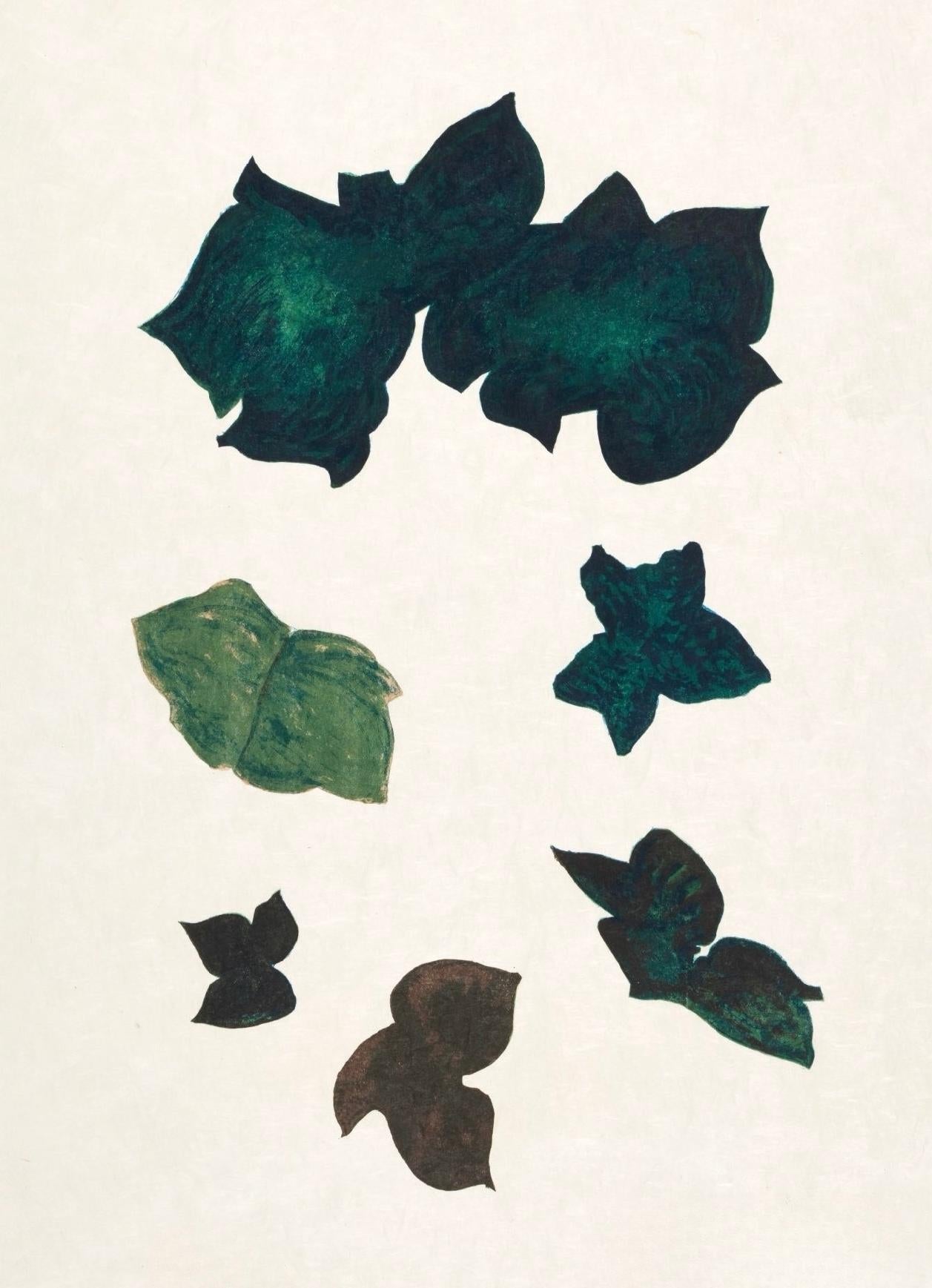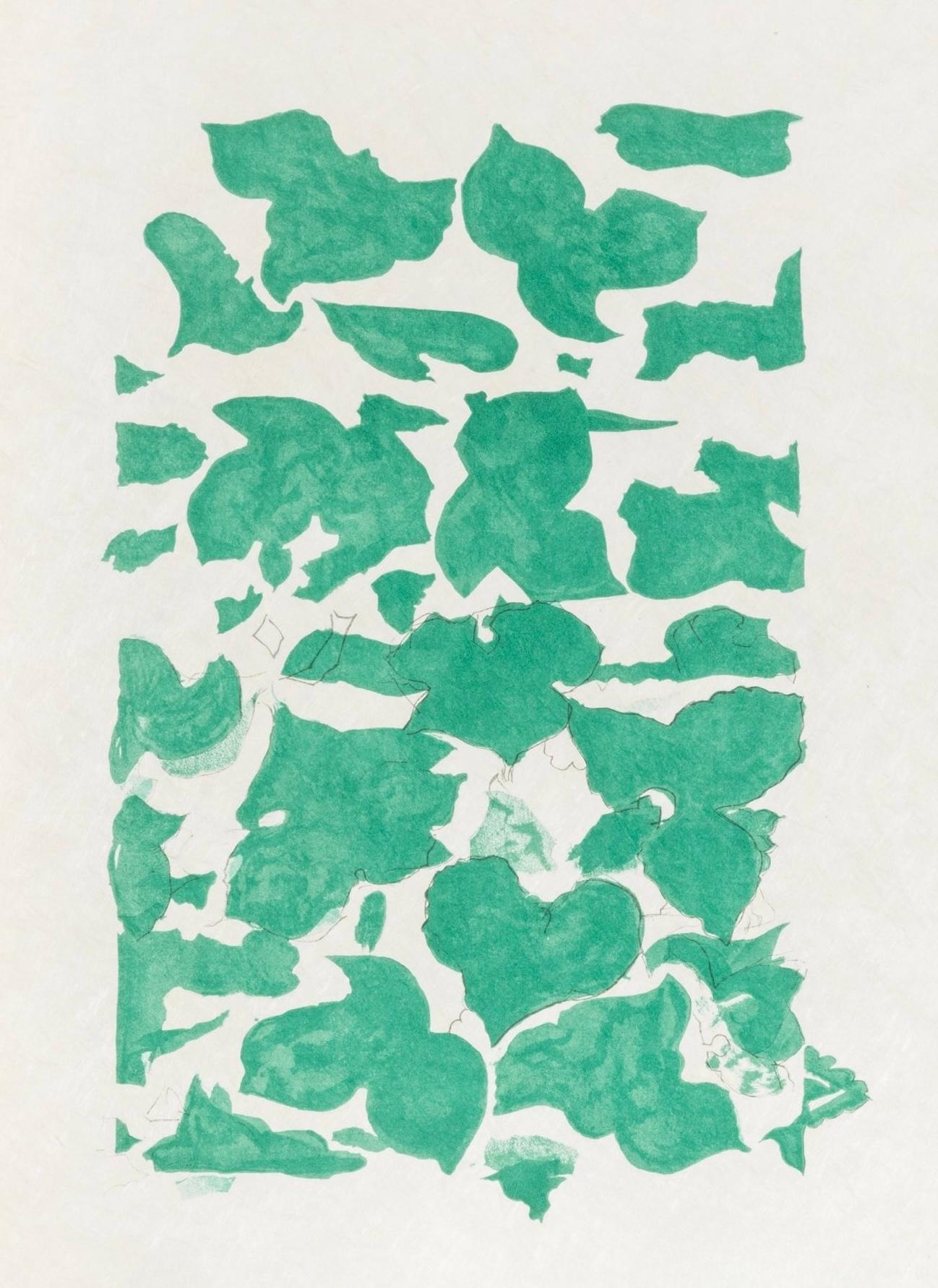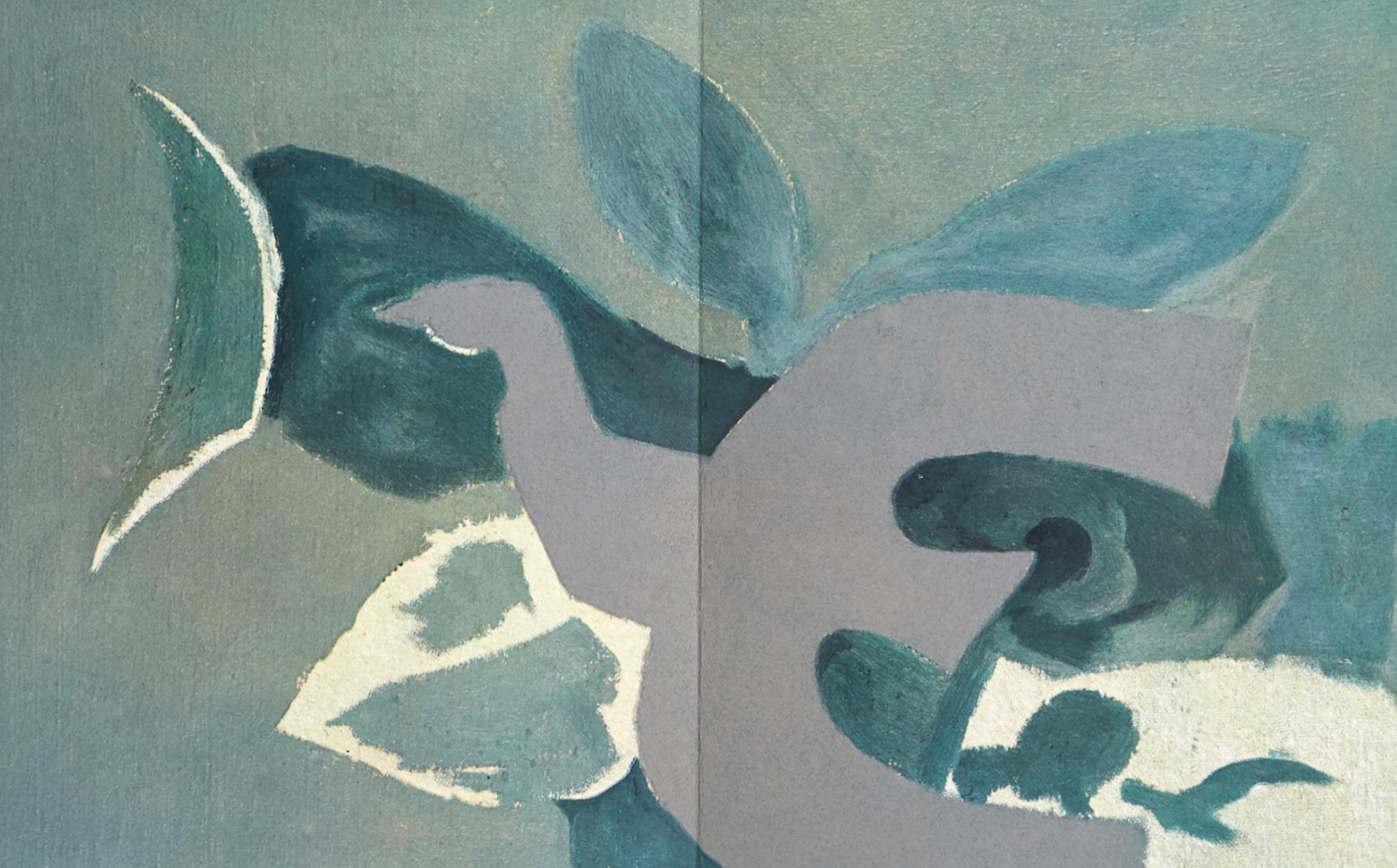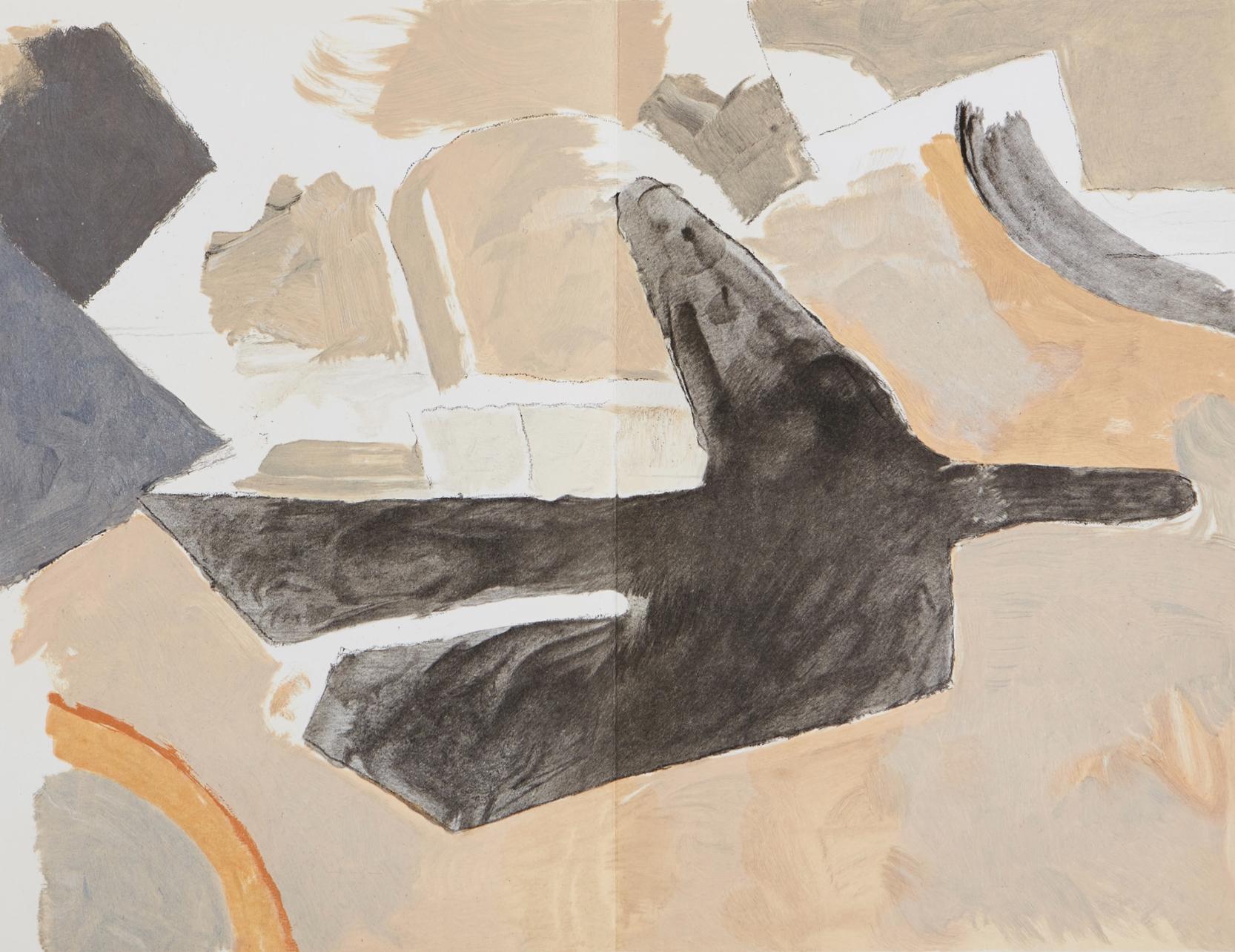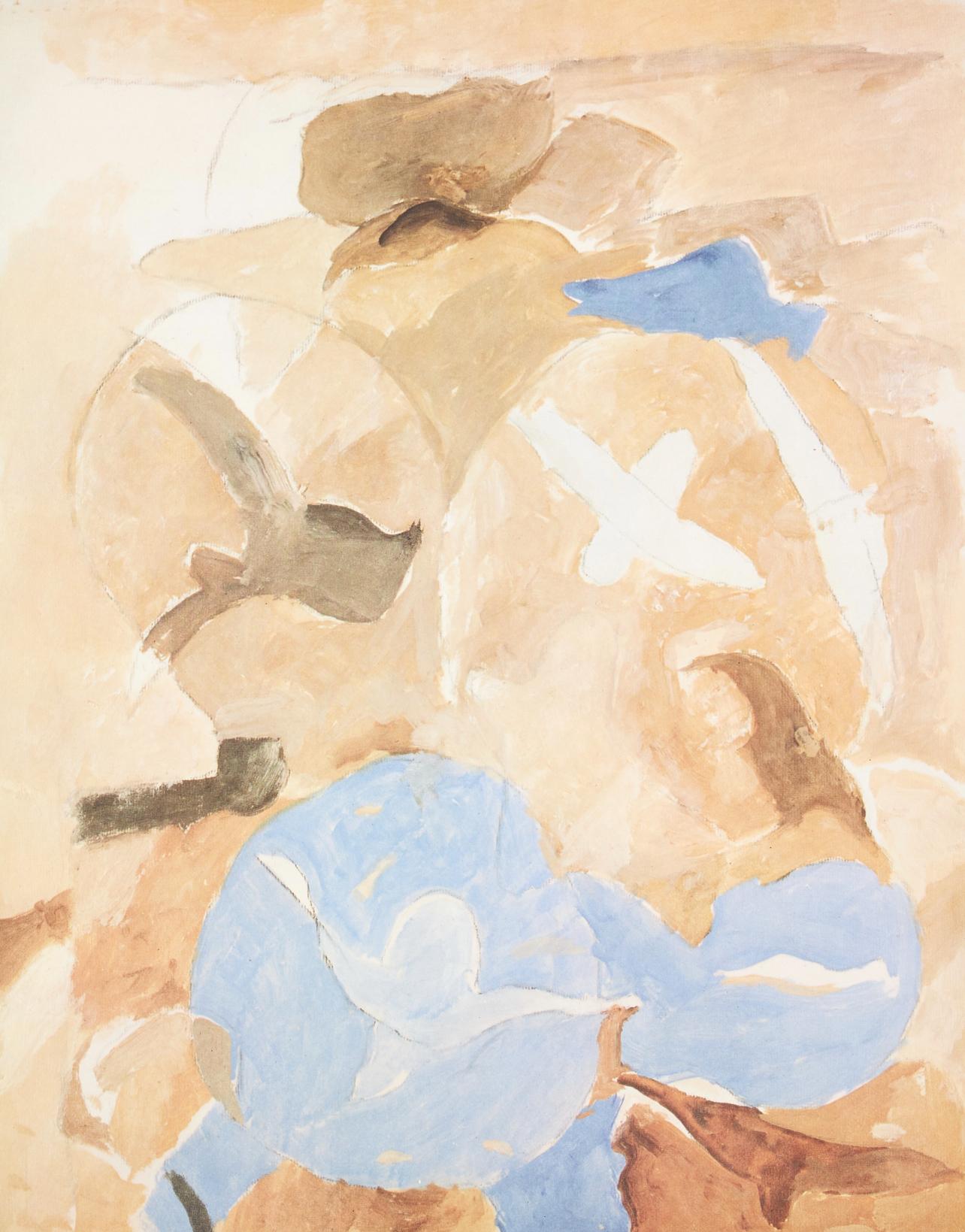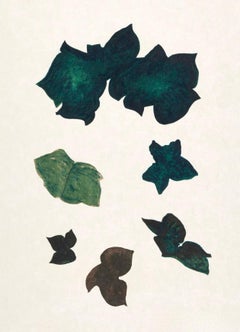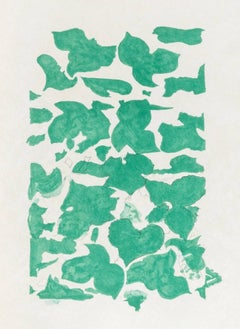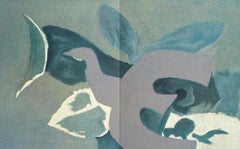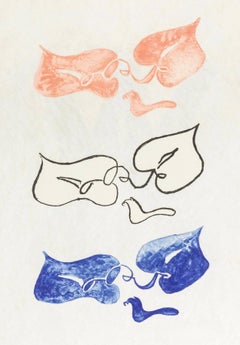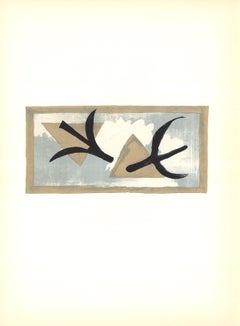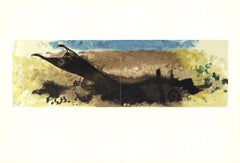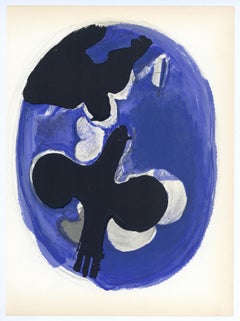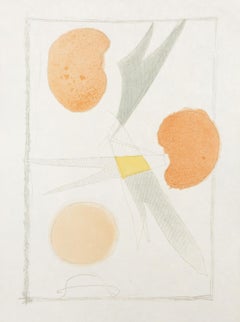Items Similar to Georges Braque, La liberté des mers, L'édition de tête (after)
Want more images or videos?
Request additional images or videos from the seller
1 of 10
Georges Braque, La liberté des mers, L'édition de tête (after)1963
1963
$1,436
$1,79520% Off
£1,091.85
£1,364.8120% Off
€1,257.82
€1,572.2820% Off
CA$2,041.61
CA$2,552.0220% Off
A$2,218.88
A$2,773.6020% Off
CHF 1,172.59
CHF 1,465.7420% Off
MX$26,843.71
MX$33,554.6320% Off
NOK 14,603.81
NOK 18,254.7720% Off
SEK 13,794.21
SEK 17,242.7620% Off
DKK 9,391.08
DKK 11,738.8520% Off
About the Item
Lithograph on vélin de Rives paper. Inscription: Unsigned and unnumbered, as issued. Good condition. Notes: From the folio, tête edition, Consacre a Pierre Reverdy et Georges Braque, Derrière le miroir, N° 135-136, 1963. Published by Maeght Éditeur, Paris; printed by Maeght Imprimeur, Paris, January 28, 1963, in an edition of 150. Excerpted from the folio (translated from French), The tête edition of this issue of "Behind the Mirror", dedicated to Pierre Reverdy and Georges Braque, is limited to 150 numbered examples on vélin de Rives, printed in Paris on January 28, 1963 on the presses of Maeght Imprimeur for lithographies and Fequet et Baudier for typography.
GEORGES BRAQUE (1882-1963) was a major 20th-century French painter, collagist, draughtsman, printmaker and sculptor. His most notable contributions were in his alliance with Fauvism from 1905, and the role he played in the development of Cubism. Braque's work between 1908 and 1912 is closely associated with that of his colleague Pablo Picasso. Their respective Cubist works were indistinguishable for many years, yet the quiet nature of Braque was partially eclipsed by the fame and notoriety of Picasso.
- Creation Year:1963
- Dimensions:Height: 15 in (38.1 cm)Width: 11 in (27.94 cm)
- Medium:
- Movement & Style:
- After:Georges Braque (1882 - 1963, French)
- Period:
- Condition:
- Gallery Location:Southampton, NY
- Reference Number:1stDibs: LU1465215047332
About the Seller
4.9
Platinum Seller
Premium sellers with a 4.7+ rating and 24-hour response times
Established in 1978
1stDibs seller since 2021
1,197 sales on 1stDibs
Typical response time: <1 hour
- ShippingRetrieving quote...Shipping from: Southampton, NY
- Return Policy
Authenticity Guarantee
In the unlikely event there’s an issue with an item’s authenticity, contact us within 1 year for a full refund. DetailsMoney-Back Guarantee
If your item is not as described, is damaged in transit, or does not arrive, contact us within 7 days for a full refund. Details24-Hour Cancellation
You have a 24-hour grace period in which to reconsider your purchase, with no questions asked.Vetted Professional Sellers
Our world-class sellers must adhere to strict standards for service and quality, maintaining the integrity of our listings.Price-Match Guarantee
If you find that a seller listed the same item for a lower price elsewhere, we’ll match it.Trusted Global Delivery
Our best-in-class carrier network provides specialized shipping options worldwide, including custom delivery.More From This Seller
View AllComposition (Vallier 143), La Liberté des Mers, Georges Braque
By Georges Braque
Located in Southampton, NY
Lithograph on grand vélin d'Arches paper. Inscription: unsigned and unnumbered, as issued. Good condition. Notes: from the folio, La Liberté des Mers, 1959. Published by Maeght Édite...
Category
1950s Modern Landscape Prints
Materials
Lithograph
$6,396 Sale Price
20% Off
Free Shipping
Composition (Vallier 143), La Liberté des Mers, Georges Braque
By Georges Braque
Located in Southampton, NY
Lithograph on grand vélin d'Arches paper. Inscription: unsigned and unnumbered, as issued. Good condition. Notes: from the folio, La Liberté des Mers, 1959. Published by Maeght Édite...
Category
1950s Modern Landscape Prints
Materials
Lithograph
$6,396 Sale Price
20% Off
Free Shipping
Georges Braque, Composition, L'édition de tête (after)
By Georges Braque
Located in Southampton, NY
Lithograph on vélin de Lana paper. Inscription: Unsigned and unnumbered, as issued. Good condition, with centerfold, as issued. Notes: From the folio, tête edition, Consacré a George...
Category
1960s Modern Abstract Prints
Materials
Lithograph
Composition (Vallier 143), La Liberté des Mers, Georges Braque
By Georges Braque
Located in Southampton, NY
Lithograph on grand vélin d'Arches paper. Inscription: unsigned and unnumbered, as issued. Good condition. Notes: from the folio, La Liberté des Mers, 1959. Published by Maeght Édite...
Category
1950s Modern Landscape Prints
Materials
Lithograph
$6,396 Sale Price
20% Off
Free Shipping
Georges Braque, Composition, L'édition de tête (after)
By Georges Braque
Located in Southampton, NY
Lithograph on vélin de Lana paper. Inscription: Unsigned and unnumbered, as issued. Good condition, with centerfold, as issued. Notes: From the folio, tête edition, Consacré a George...
Category
1960s Modern Abstract Prints
Materials
Lithograph
Georges Braque, Composition, L'édition de tête (after)
By Georges Braque
Located in Southampton, NY
Lithograph on vélin de Lana paper. Inscription: Unsigned and unnumbered, as issued. Good condition. Notes: From the folio, tête edition, Consacré a Georges Braque, Derniers messages,...
Category
1960s Modern Abstract Prints
Materials
Lithograph
You May Also Like
After Georges Braque 'En Vol'
By Georges Braque
Located in Brooklyn, NY
This is a first edition lithograph reproduction of Georges Braque's En Vol (In Flight), published in 1959 as part of Derrière le Miroir (DLM) No. 115. The lithograph is featured on p...
Category
1950s Cubist Prints and Multiples
Materials
Lithograph
$200 Sale Price
20% Off
Georges Braque 'Bord de Mer'
By Georges Braque
Located in Brooklyn, NY
This original lithograph by Georges Braque, titled Bord de Mer (Seashore), was published by Maeght in 1960 as part of the Derriere le Miroir series. The double page lithograph featur...
Category
1960s Modern Prints and Multiples
Materials
Lithograph
$240 Sale Price
52% Off
lithograph
By (after) Georges Braque
Located in Henderson, NV
Medium: lithograph (after the watercolor sketch). Printed in 1955 at the Mourlot Freres atelier, this composition is from George Braque's Intimate Sketchbooks (Carnets Intimes). Braq...
Category
1950s Prints and Multiples
Materials
Lithograph
La Liberte des Mers, Modern Abstract Lithograph by Georges Braque
By Georges Braque
Located in Long Island City, NY
Georges Braque, French (1882 - 1963) - La Liberte des Mers, Year: 1959, Medium: Lithograph on Japon Nacre, Edition: 250, Image Size: 17.5 x 11.5 inches, Size: 22 x 15 in. (55.88 x 3...
Category
1950s Modern Prints and Multiples
Materials
Lithograph
1960 Georges Braque 'La Charrue'
By Georges Braque
Located in Brooklyn, NY
This lithograph titled La Charrue (The Plow) is a reproduction of an original work, published in the first edition of Derrière le Miroir (DLM) No. 119 in 1960. Presented as a double-...
Category
1960s Modern Prints and Multiples
Materials
Lithograph
$200 Sale Price
20% Off
Georges Braque - Original Lithograph
By Georges Braque
Located in Collonge Bellerive, Geneve, CH
Georges Braque - Original Lithograph
1963
Dimensions: 32 x 24 cm
Andre Sauret, Monte Carlo
The father of Cubism
Three Cubist that distinguishes art historian periods were initiated and developed by Georges Braque: The Cubist Cézanne (1907-1909), Executive (1909-1912) and synthetic (1912-1922).
Post-Impressionist and fawn, Braque no longer adheres to the contingency of a decorative way or the other. Cézanne’s paintings exhibited at the Grand Palais during the retrospective of 1907 are a revelation: Cézanne sought and invented a pictorial language. In his footsteps, Braque went to the South with the reasons of the Master. He returned with Estaque landscapes and surprising Ciotat it keeps Cezanne geometric model and retains the “passages” continuity from one surface to another to create the sensation of “turning around” of the object represented. But he wants to go after the consequences of the vision of Cezanne. In his paintings Houses in L’Estaque (1908) it simplifies the volumes of houses, neglects detail by removing doors and windows: the plastic rhythm that builds the table. Large Nude , a masterpiece of the period, can be considered the first work of Cézanne cubism .
Systematizing and deepening Braque discoveries open the door analytical cubism. In 1909, his painting became more cerebral than sensual. The pattern is recreated in the two-dimensionality of the canvas, leaving aside any illusionistic perspective. In Still Life with Violin, objects are analyzed facets according to their characteristic elements, each facet referring to a particular view of the object. There are so many facets of points selected view: Table reflects the knowledge of the object and the ubiquity of the eye. Moreover, Braque is looking for the essence of the objects in the world rather than their contingency, which explains the absence of light source and use of muted colors (gray, ocher), contingent aspects of the object . But formal logic has stepped facets, erased any anecdote to the object and ultimately led to his painting a hermetic more marked on the edge of abstraction (see the series of Castle Roche-Guyon ).
Braque, anxious to keep the concrete and refusing at all costs that the logic of Cubism takes the paintings to abstract, reintroduced signs of reality in his paintings in 1912 marks the beginning of Synthetic Cubism. Historians speak of “signs of real” rather than reality because what interests Braque, this is not to put reality into a table, but to create a painting which, by its language, refers to the real. To do this, he invented two major techniques XX th century inclusions and contributions. The inclusions consist of painting objects that have no real depth, materials (wallpaper in Nature morte aux playing cards faux wood is a pictorial inclusion) or letters (calligraphic inclusion in Portuguese ), made first brush and a few months later stencil. Contributions are defined in contrast with the collage on canvas of foreign materials: glued or sand paper, sawdust, etc.. Regarding the collages, Braque used for the first time in September 1912 a piece of adhesive paper imitating faux wood Compote and Glass , then the packet envelope of tobacco Bock in 1912-1913, or an advertisement in Damier , 1913). Inputs and inclusions refer to an external object in the table, without “emulate” this object. Away from their appearances, objects are represented in closest essence of the objects in the real world sense.
This is also the time of Synthetic Cubism that Braque invented paper sculpture. There are, unfortunately, and no one is living proof of a photograph makes it possible to realize: Paper and paperboard.
Métamorphoses period(1961-1963).
In 1961, Georges Braque worked on a Greek head for the Louvre, which obsesses him, and he wishes to free his mind. He tried several times to bring out the paint and the result was unsatisfactory. He thinks the ultimate metamorphosis its Greek head projected in three dimensions. He calls in his studio of Baron Heger Loewenfeld, master lapidary, and he communicates his enthusiasm during the “fateful encounter.” Nine months later, in honor of the eighty years of Georges Braque, Heger Loewenfeld offers the Master of the ring Circe: the famous Greek head finally exorcised, carved in an onyx. Braque Loewenfeld then asked to identify other issues that haunt him.
From dated and signed by Georges Braque, Heger gouaches Loewenfeld shapes works in the fields of jewelery, lapidary art...
Category
1960s Modern Figurative Prints
Materials
Lithograph
More Ways To Browse
Robert Motherwell Octavio Paz
Roy Lichtenstein Plate
Ruth Alexander
Sam Francis Monotype
Steinberg Print Signed
Stephen Powers
Terry Rodgers
Tightrope Walker Vintage
Tom Levine
Vintage Sun And Moon Art
Voulkos Monotypes
Will Insley
Woodcut Braque
Yaacov Agam Original
Agam Metamorphosis
Agnes Martin Print
Albers Poster
Aleah Koury
